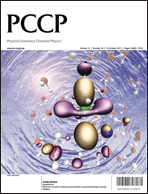Density Functional Theory (DFT) has been used with an empirically-derived correction for the wavenumbers of vibrational band positions to predict the infrared spectra of several fluorinated esters (FESs). Radiative efficiencies (REs) were then determined using the method of Pinnock et al. and these were used with atmospheric lifetimes from the literature to determine the direct global warming potentials of FESs. FESs, in particular fluoroalkylacetates, alkylfluoroacetates and fluoroalkylformates, are potential greenhouse gases and their likely long atmospheric lifetimes and relatively large REs, compared to their parent HFEs, make them active contributors to global warming. Here, we use the concept of indirect global warming potential (indirect GWP) to assess the contribution to the warming of several commonly used HFEs emitted from the Earth's surface, explicitly taking into account that these HFEs will be converted into the corresponding FESs in the troposphere. The indirect GWP can be calculated using the radiative efficiencies and lifetimes of the HFE and its degradation FES products. We found that the GWPs of those studied HFEs which have the smallest direct GWP can be increased by 100–1600% when taking account of the cumulative effect due to the secondary FESs formed during HFE atmospheric oxidation. This effect may be particularly important for non-segregated HFEs and some segregated HFEs, which may contribute significantly more to global warming than can be concluded from examination of their direct GWPs.

You have access to this article
 Please wait while we load your content...
Something went wrong. Try again?
Please wait while we load your content...
Something went wrong. Try again?


 Please wait while we load your content...
Please wait while we load your content...